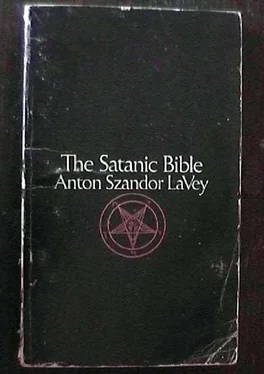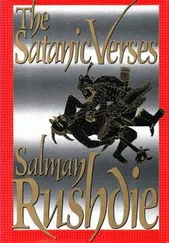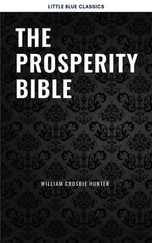Anton LaVey - The Satanic Bible
Здесь есть возможность читать онлайн «Anton LaVey - The Satanic Bible» весь текст электронной книги совершенно бесплатно (целиком полную версию без сокращений). В некоторых случаях можно слушать аудио, скачать через торрент в формате fb2 и присутствует краткое содержание. Жанр: Фантастика и фэнтези, на английском языке. Описание произведения, (предисловие) а так же отзывы посетителей доступны на портале библиотеки ЛибКат.
- Название:The Satanic Bible
- Автор:
- Жанр:
- Год:неизвестен
- ISBN:нет данных
- Рейтинг книги:3.54 / 5. Голосов: 13
-
Избранное:Добавить в избранное
- Отзывы:
-
Ваша оценка:
- 80
- 1
- 2
- 3
- 4
- 5
The Satanic Bible: краткое содержание, описание и аннотация
Предлагаем к чтению аннотацию, описание, краткое содержание или предисловие (зависит от того, что написал сам автор книги «The Satanic Bible»). Если вы не нашли необходимую информацию о книге — напишите в комментариях, мы постараемся отыскать её.
The Satanic Bible — читать онлайн бесплатно полную книгу (весь текст) целиком
Ниже представлен текст книги, разбитый по страницам. Система сохранения места последней прочитанной страницы, позволяет с удобством читать онлайн бесплатно книгу «The Satanic Bible», без необходимости каждый раз заново искать на чём Вы остановились. Поставьте закладку, и сможете в любой момент перейти на страницу, на которой закончили чтение.
Интервал:
Закладка:
Anton Szandor LaVey
The Satanic Bible
INTRODUCTION
by Burton H. Wolfe (author of The Hippies, Hitler and the Nazis, The Devil and Dr. Noxin, Pileup on Death Row, and The Devil's Avenger: a Biography of Anton Szandor LaVey)
On a winter's evening in 1967, I drove crosstown in San Fransisco to hear Anton Szandor LaVey lecture at an open meeting of the Sexual Freedom League. I was attracted by newspaper articles describing him as "the Black Pope" of a Satanic church in which baptism, wedding, and funeral ceremonies were dedicated to the Devil. I was a free-lance magazine writer, and I felt there might be a story in LaVey and his contemporary pagans; for the Devil has always made "good copy", as they say on the city desk.
It was not the practice of the black arts itself that I considered to be the story, because that is nothing new in the world. There were Devil-worshipping sects and voodoo cults before there were Christians. In eighteenth-century England a Hell-Fire Club, with connections to the American colonies through Benjamin Franklin, gained some brief notoriety. During the early part of the twentieth century, the press publicized Aleister Crowley as the "wickedest man in the world". And there were hints in the 1920s and '30s of a "black order" in Germany.
To this seemingly old story LaVey and his organization of contemporary Faustians offered two strikingly new chapters. First, they blasphemously represented themselves as a "church", a term previously confined to the branches of Christianity, instead of the traditional coven of Satanism and witchcraft lore. Second, they practiced their black magic openly instead of underground.
Rather than arrange a preliminary interview with LaVey for discussion of his heretical innovations, my usual first step in research, I decided to watch and listen to him as an unidentified member of an audience. He was described in some newspapers as a former circus and carnival lion tamer and trickster now representing himself as the Devil's representative on earth, and I wanted to determine first whether he was a true Satanist, a prankster, or a quack. I had already met people in the limelight of the occult business; in fact, Jeane Dixon was my landlady and I had a chance to write about her before Ruth Montgomery did. But I had considered all the occultists phonies, hypocrites, or quacks, and I would never spend five minutes writing about their various forms of hocus-pocus.
All the occultists I had met or heard of were white-lighters: alleged seers, prophesiers, and witches wrapping their supposedly mystic powers around God-based, spiritual communication. LaVey, seeming to laugh at them if not spit on them in contempt, emerged from between the lines of newspaper stories as a black magician basing his work on the dark side of nature and the carnal side of humanity. There seemed to be nothing spiritual about his "church".
As I listened to LaVey talk that first time, I realized at once there was nothing to connect him with the occult business. He could not even be described as metaphysical. The brutally frank talk he delivered was pragmatic, relativistic, and above all rational. It was unorthodox, to be sure: a blast at established religious worship, repression of humanity's carnal nature, phony pretense at piety in the course of an existence based on dog-eat-dog material pursuits. It was also full of sardonic satire on human folly. But most important of all, the talk was logical. It was not quack magic that LaVey offered his audience. It was common sense philosophy based on the realities of life.
After I became convinced of LaVey's sincerity, I had to convince him that I intended to do some serious research instead of adding to the accumulation of hack articles dealing with the Church of Satan as a new type of freak show. I boned up on Satanism, discussed its history and rationale with LaVey, and attended some midnight rituals in the famous Victorian manse once used as Church of Satan headquarters. Out of all that I produced a serious article, only to find that was not what the publishers of "respectable" magazines wanted. They were interested in only the freak show kind of article. Finally, it was a so-called "girlie" or "man's" magazine, Knight of September 1968, that published the first definitive article on LaVey, the Church of Satan, and LaVey's synthesis of the old Devil legends and black magic lore into the modern philosophy and practice of Satanism that all followers and imitators now use as their model, their guide, and even their Bible.
My magazine article was the beginning, not the end (as it has been with my other writing subjects), of a long and intimate association. Out of it came my biography of LaVey, The Devil's Avenger, published by Pryamid in 1974. After the book was published, I became a card-carrying member and, subsequently, a priest of the Church of Satan, a title I now proudly share with many celebrated persons. The postmidnight philosophical discussions I began with LaVey in 1967 continue today, a decade later, supplemented sometimes these days by a nifty witch or some of our own music, him on organ and me on drums, in a bizarre cabaret populated by superrealistic humanoids of LaVey's creation.
All of LaVey's background seemed to prepare him for his role. He is the descendant of Georgian, Roumanian, and Alsatian grandparents, including a gypsy grandmother who passed on to him the legends of vampires and witches in her native Transylvania. As early as the age of five, LaVey was reading Weird-Tales magazines and books such as Mary Shelly's Frankenstein and Bram Stoker's Dracula. Though he was different from other children, they appointed him as leader in marches and maneuvers in mock military orders.
In 1942, when LaVey was twelve, his fascination with toy soldiers led to concern over World War II. He delved into military manuals and discovered arsenals for the equipment of armies and navies could be bought like groceries in a supermarket and used to conquer nations. The idea took shape in his head that contrary to what the Christian Bible said, the earth would not be inhereted by the meek, but by the mighty.
In high school LaVey became something of an offbeat child prodigy. Reserving his most serious studies for outside the school, he delved into music, metaphysics, and secrets of the occult. At fifteen, he became second oboist in the San Fransisco Ballet Symphony Orchestra. Bored with high school classes, LaVey dropped out in his Junior year, left home, and joined the Clyde Beatty Circus as a cage boy, watering and feeding the lions and tigers. Animal trainer Beatty noticed that LaVey was comfortable working with the big cats and made him an assistant trainer.
Possessed since childhood by a passion for the arts, for culture, LaVey was not content merely with the excitement of training jungle beasts and working with them in the ring as a fill-in for Beatty. By age ten he had taught himself to play the piano by ear. This came in handy when the circus calliope player became drunk before a performance and was unable to go on; LaVey volunteered to replace him, confident he could handle the unfamiliar organ keyboard well enough to provide the necessary background music. It turned out he knew more music and played better than the regular calliopist, so Beatty cashiered the drunk and installed LaVey at the instrument. He accompanied the "Human Cannonball", Hugo Zachinni, and the Wallendas' high-wire acts, among others.
When LaVey was eighteen he left the circus and joined a carnival. There he became assistant to a magician, learned hypnosis, and studied more about the occult. It was a curious combination. On the one side he was working in an atmosphere of life at its rawest level - of earthy music; the smell of wild animals and sawdust; acts in which a second of missed timing meant accident or death; performances that demanded youth and strength, and shed those who grew old like last year's clothes; a world of physical excitement that had magical attractions. On the other side, he was working with magic in the dark side of the human brain. Perhaps the strange combination influenced the way he began to view humanity as he played organ for carnival sideshows.
Читать дальшеИнтервал:
Закладка:
Похожие книги на «The Satanic Bible»
Представляем Вашему вниманию похожие книги на «The Satanic Bible» списком для выбора. Мы отобрали схожую по названию и смыслу литературу в надежде предоставить читателям больше вариантов отыскать новые, интересные, ещё непрочитанные произведения.
Обсуждение, отзывы о книге «The Satanic Bible» и просто собственные мнения читателей. Оставьте ваши комментарии, напишите, что Вы думаете о произведении, его смысле или главных героях. Укажите что конкретно понравилось, а что нет, и почему Вы так считаете.












